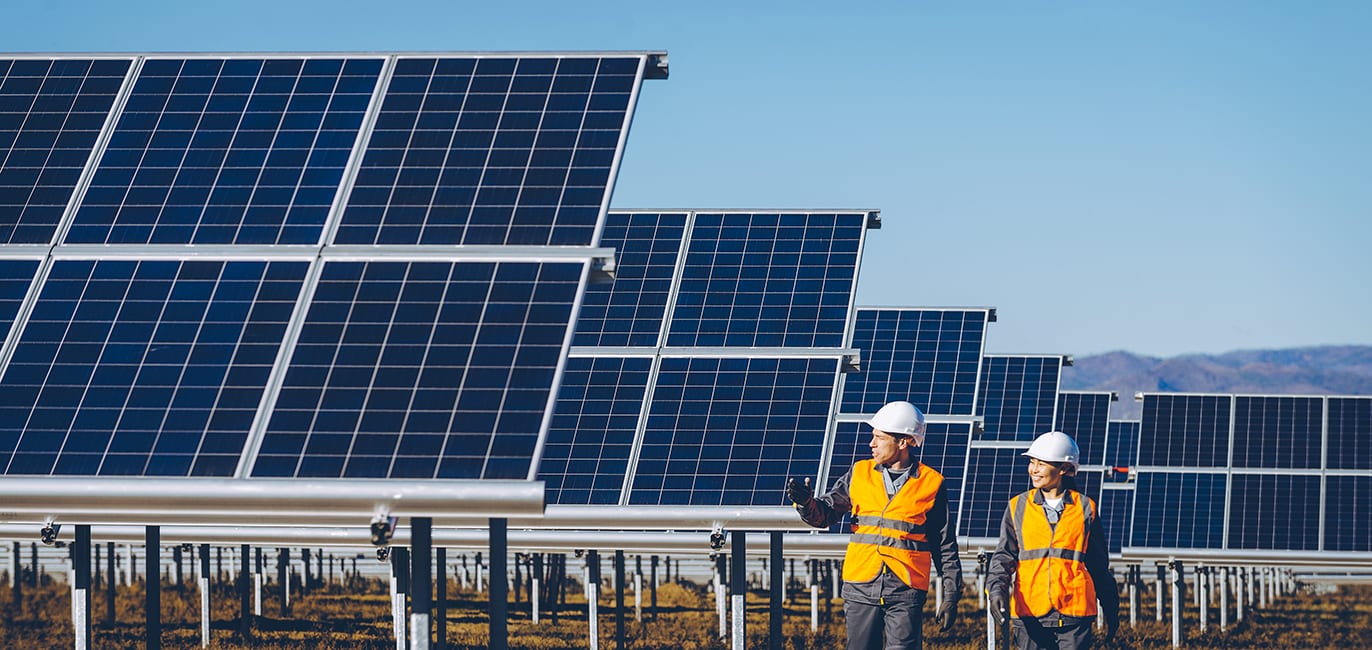
Digitalization and Photovoltaic Plants: The Search for Efficiency
According to data from Red Eléctrica Española, installed solar photovoltaic power in Spain is living a period of expansion, growing from 4,686 Megawatts in 2016 to 5,817 in 2019 – a growth spurred by the suppression of the so-called ‘sun tax’ and the progressive disappearance of the bureaucratic hurdles that have hampered sector evolution.
The sector is recovering its good health but, as in any other productive field, it also confronts the need to make its productivity more efficient and improve operating ratios.
The Ikusi proposal in this field involves optimizing its key assets. What do we mean by this? What we propose is to improve the efficiency of plants and reduce their maintenance costs by monitoring, analyzing and optimizing the behavior of their assets. In a word, evolving them from traditional to smart assets.
A solar plant is basically composed of three key building blocks: solar panels, inverters and transformers. The panels capture the energy from the sun and turn it into continuous current. To move this power through the electric grid, the inverter first transforms it into alternating current, and afterwards, the transformer turns it into high voltage power in order to minimize loss in the course of grid transmission. Ikusi at this moment is focusing its work on the inverter due to its key role within this ecosystem and its direct impact on profitability, by implementing any type of improvement to its performance or availability.
On this journey, the first step is data-gathering: collecting the greatest quantity and variety of data on the operation and productivity of the inverters, based on multiple context variables such as type of plant, schedule, weather conditions, solar radiation (irradiation), etc. After this, data cleaning, correlation and quality are important in this process, in order to ensure that the information and the insights obtained will allow for business decision-making that will enable the improvement of plant outputs.
Once quality data are available , behavioral curves of the inverters are generated that will enable the comparison of theoretical plant behavior with current real equipment behavior, allowing trend profiling and analysis.
This information will make it possible to predict the future behavior of the inverter using techniques of predictive analysis (machine learning): degeneration of performance over time, the smart management of preventive maintenance (grouping preventive equipment replacements before breakdown), solar park asset renewal planning support, even opening the possibility of collaborating with the asset manufacturer to improve the asset and adapt it to real needs. If real-time park connectivity is added to this, a holistic view of the current and future status of the plants is obtained in real time managed by dashboards with indicators (KPIs), alarms and operational suggestions.
The Digital Twin as a Goal
The final goal is the implementation of a digital twin for the inverters; i.e., a virtual replica of the inverter in order to anticipate possible problems or propose and test improvements in a virtual laboratory environment before launching them into the real world.
This digital twin gives the chance to work in prescriptive analytics in order to generate configuration and operation recommendations based on certain given requirements of asset durability or performance.
The result obtained through these digitalization projects is increased power production, by maximizing the time the inverter is available, optimizing its useful life and reducing its maintenance costs.
Next steps are building digital twins of the solar panels, transformers and the rest key assets in order to build a Digital Twin of the full solar plant.
A world of possibilities that will enable pioneers to achieve competitive advantages with which to create value for their clients, at a time when reduction targets for greenhouse gas emissions herald the increasingly greater penetration of renewable energies and the constant search for greater power efficiency.


